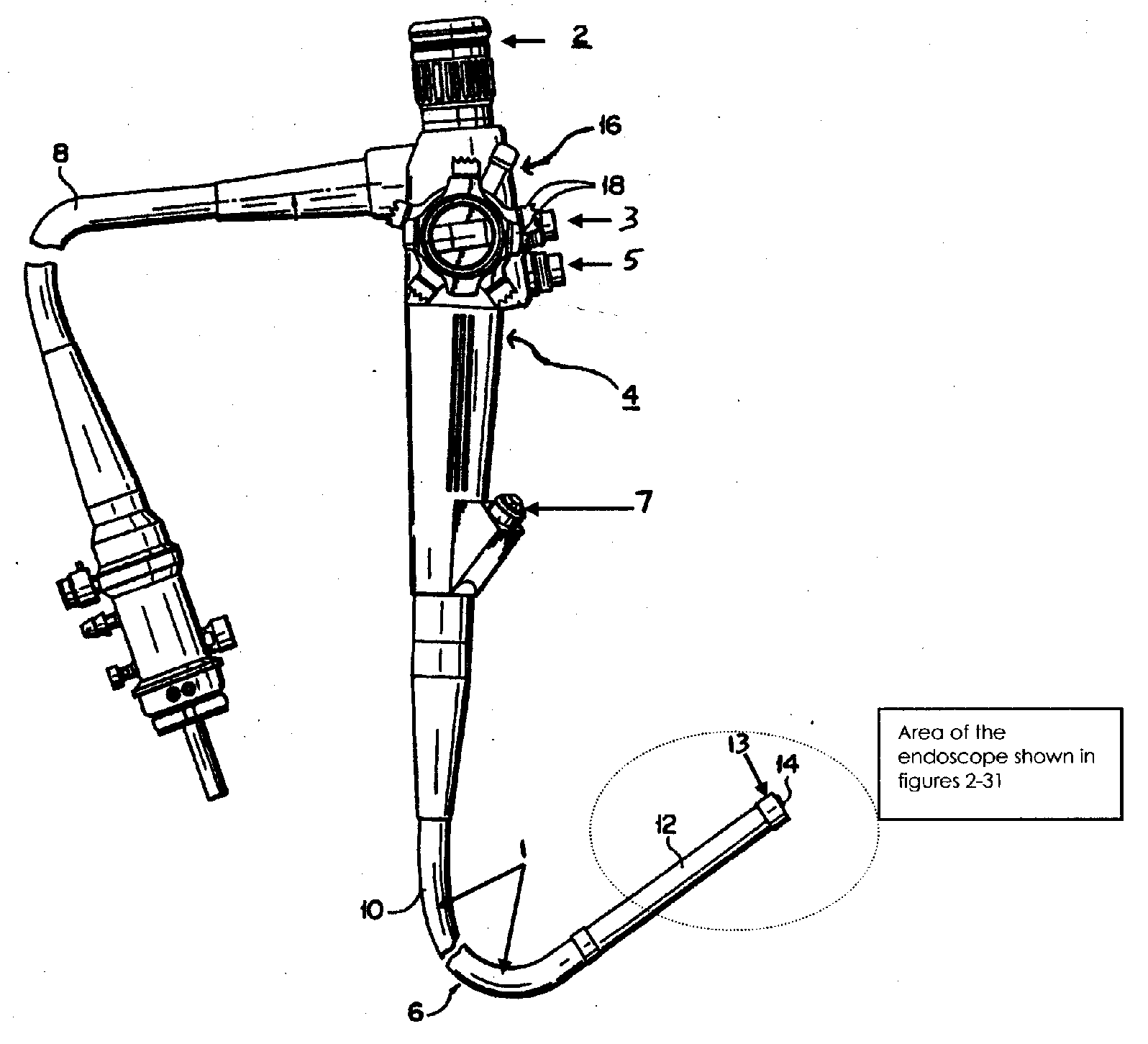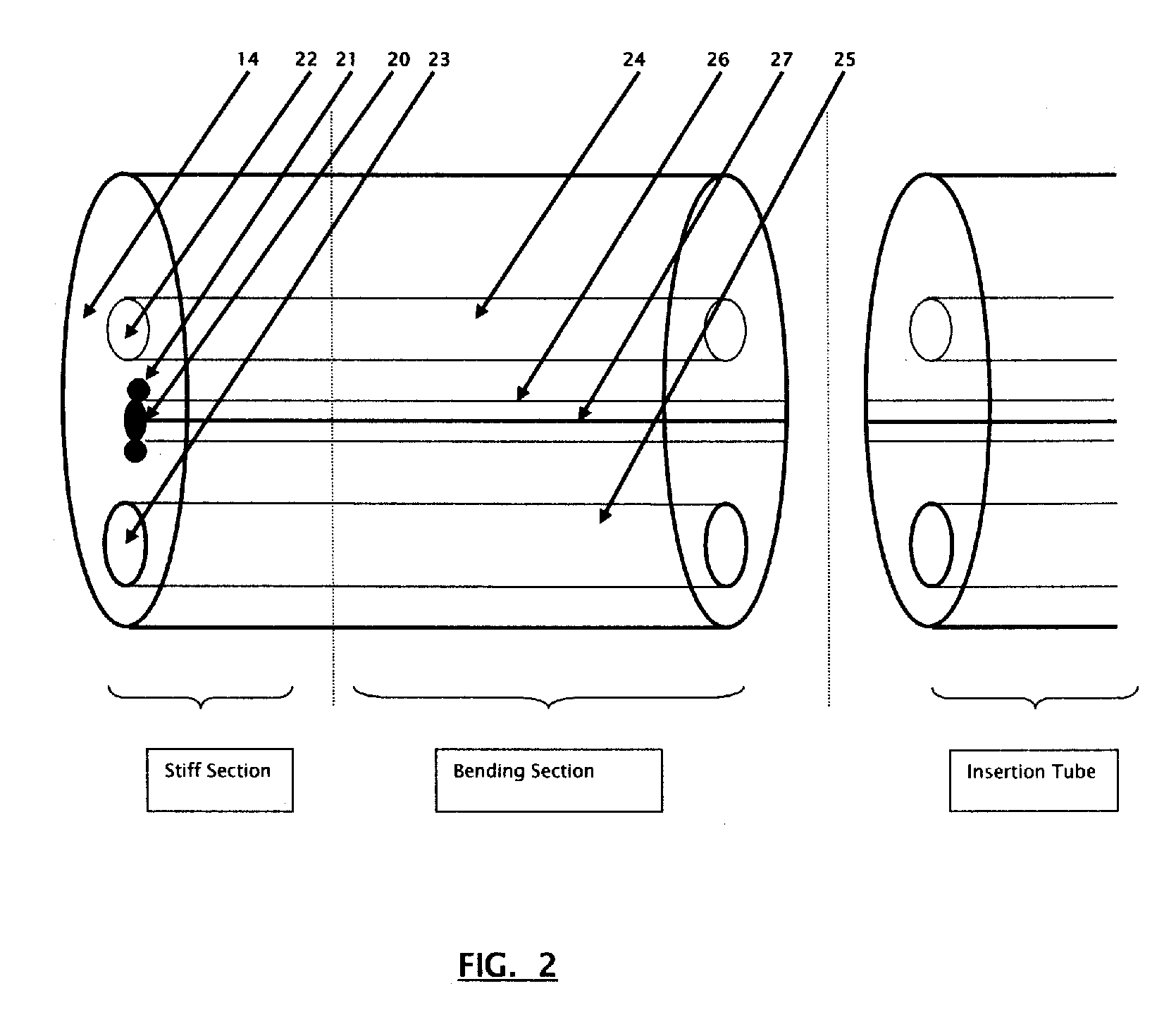Dual view endoscope
a dual-view, endoscope technology, applied in the field of endoscopes, can solve the problems of significant limitations of endoscopes, risky insertion of endoscopes into hollow organs, trauma, bleeding and perforation, etc., and achieve the effect of adequate distension
- Summary
- Abstract
- Description
- Claims
- Application Information
AI Technical Summary
Benefits of technology
Problems solved by technology
Method used
Image
Examples
Embodiment Construction
[0045]Reference will now be made in detail to the preferred embodiments of the invention, examples of which are illustrated in the accompanying drawings. Wherever possible, the same reference numbers will be used throughout the drawings to refer to the same or like parts. The following general description applies to preferred embodiments of the present invention.
[0046]The present invention comprises of a rear view module. It is a solid structure that can be rectangular, square, tubular, discoid or of any other shape. It is attached to a conventional endoscope by a suitable mechanical articulation such as ball socket joint, hinge joint, biplanar rolling joint etc. The rear view module consists of a rear image lens to obtain a rear view. The rear image lens is attached to an image processor by an electric cable. This cable transmits the image obtained by the rear image lens to the image processor. After being processed, the image is then viewed on a computer monitor or any other displ...
PUM
 Login to View More
Login to View More Abstract
Description
Claims
Application Information
 Login to View More
Login to View More - R&D
- Intellectual Property
- Life Sciences
- Materials
- Tech Scout
- Unparalleled Data Quality
- Higher Quality Content
- 60% Fewer Hallucinations
Browse by: Latest US Patents, China's latest patents, Technical Efficacy Thesaurus, Application Domain, Technology Topic, Popular Technical Reports.
© 2025 PatSnap. All rights reserved.Legal|Privacy policy|Modern Slavery Act Transparency Statement|Sitemap|About US| Contact US: help@patsnap.com



